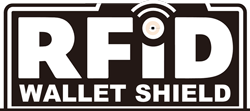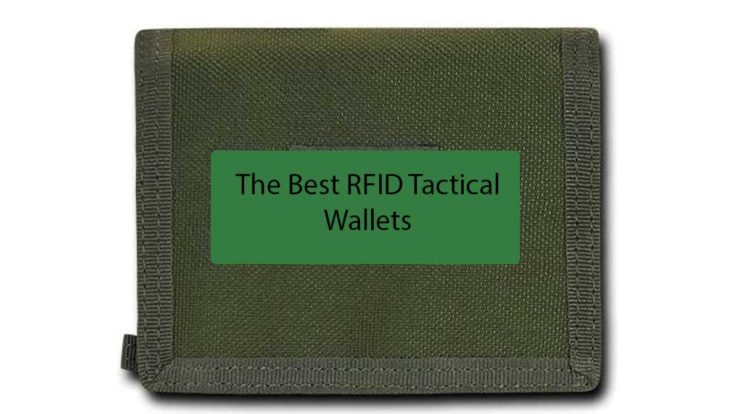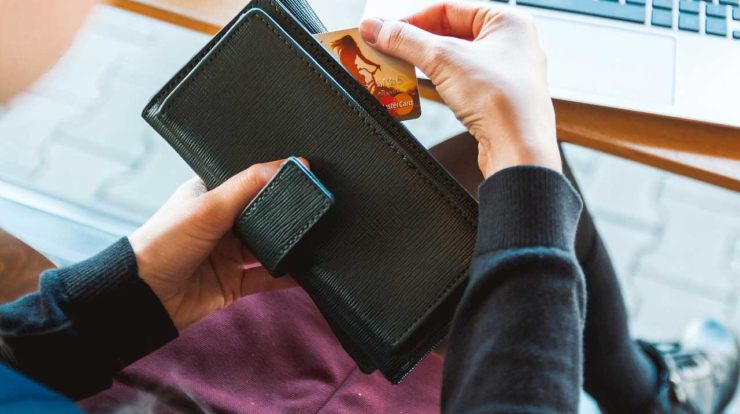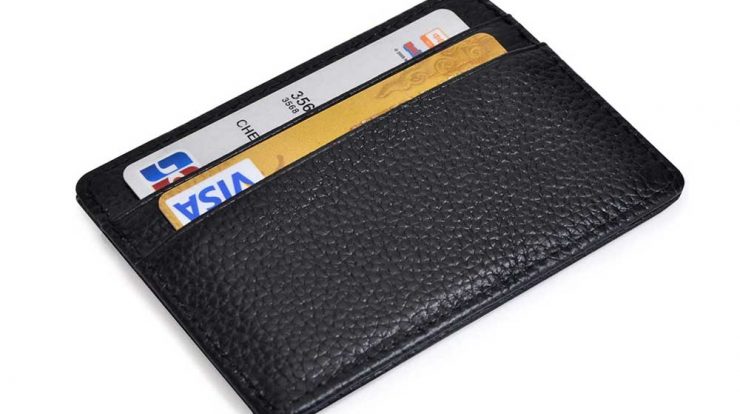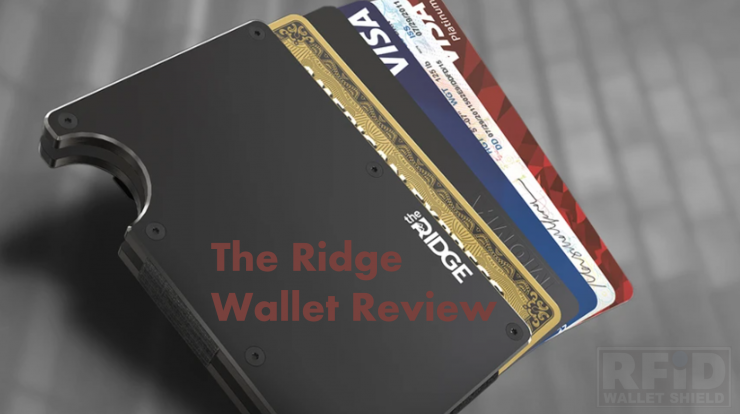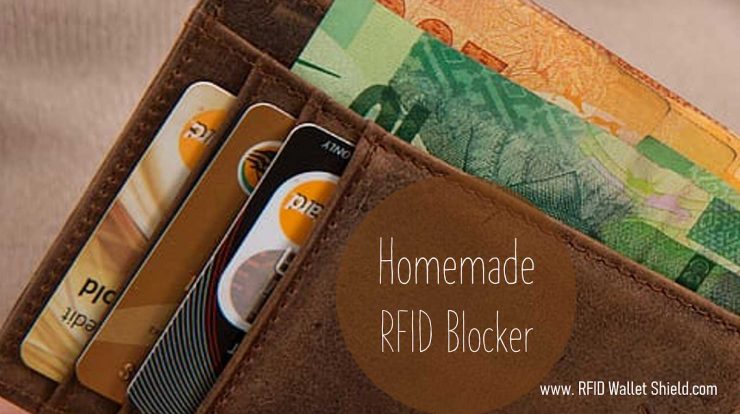
If you’re like me you look for a new wallet every few years, usually when your old one gives up the ghost, gets raggedy or you just feel like changing things up a little. Recently I started looking for a new wallet and noticed something interesting; the vast majority of them, whether bi-fold, tri-fold or the newest designs, are offering something called RFID blocking technology.
When I say the ‘vast majority’ of them, I’m not joking. It took me a couple of minutes to find a wallet that didn’t have RFID blocking technology built-in. This got me to thinking about what RFID technology is and, more importantly, if these (relatively) newfangled RFID blocking wallets really work. So I did some research and this article will tell you what I found, it explain the technology and answer the question How Do RFID Wallets Work. Enjoy.
What is RFID?
RFID stands for Radio Frequency Identification, a technology that’s been around since World War 2. It was developed to help the Allied powers determine if an airplane flying through their airspace was a friendly one or from one of the Axis powers. The system consisted of a transmitter and a receiver (reader) and had the advantage of allowing the data sent from the transmitter to be read by the receiver without actually being in view (i.e. outside the line-of-sight).
Over the decades RFID technology didn’t change very much, but the way it can be sent and received changed a lot. Receiver units are now the size of tiny chips and have been implanted into credit cards, passports, ID Tags and a massive range of different consumer products. These RFID chips make it easy for scanners to grab the data off whatever item they’ve implanted on, speeding transactions, reducing shoplifting and making things run more smoothly in airports.
What’s The Problem with RFID Chips?
The major liability of RFID technology, and the chips they use, is that there are ‘skimming’ devices that criminals can use to steal (skim) the data from your credit card, even if it’s in your wallet, purse or pocket. This can even be done with a regular smartphone that has an RFID skimming program. (What can’t smartphones do, am I right?) Even worse, it only takes a few seconds for the data theft to occur.
How Do RFID Wallets Block or Prevent Data Skimming and Theft?
Blocking an RFID skimmer is actually quite simple. A layer of dense metal can easily block skimmers from accessing the data on your credit card or passport. Knowing this fact, the manufacturers of RFID blocking wallets created a material that’s infused with stainless steel fibers.
The material is flexible (as every wallet needs to be, of course, so that we can keep in comfortably in our back pocket) and, with the stainless steel fibers inside, blocks a skimming device from gaining access to the data on the chip inside your CC and passport. It’s relatively simple and straightforward, you have to admit, and allows for wallets to stay pretty much the same size and thickness they’ve always been. (Although, if you’re like some guys I know, that thing in your pocket is more of a brick than a wallet.)
Do RFID Blocking Wallets Work?
Here’s the thing; according to a Consumer Reports survey way back in 2011, the answer to this question is a definite sometimes. Together with the security firm Recursion Ventures, Consumer Reports tested 10 different RFID blocking wallets and found that none of them completely blocked data from being skimmed off the RFID chip. Even more disturbing was that they found some of the wallets had much lower effectiveness than others.
Of course, that was then and this is now. In the last 9 years or so the companies that are manufacturing RFID blocking wallets have upped their game substantially. Today’s wallets are definitely higher-grade than they were in 2011 and do a much better job of blocking RFID signals simply because they use a thicker and denser metal shield in their wallets.
So the answer to whether RFID blocking wallets work, at least today, is a yes in most cases. A good suggestion is to purchase a high-grade RFID blocking wallet or make sure that the manufacturer is using a thicker layer of blocking material.
Are there More Important Risks to Worry About?
The truth is, RFID technology has changed drastically in the last few years. Today a new technology called EMV is being used in credit cards and passports. EMV stands for Europe, MasterCard & Visa and is today the global standard. EMV has increased the security of credit cards dramatically so that, even if a criminal could skim your CC or passport when you walked by, the info they would get would be useless.
There are, unfortunately, other ways that criminals can steal your credit card data using EMV chips, and it all stems from the fact that almost all new debit and credit cards are now contactless. Some of the places where skimming a credit card are now easier include;
- ATM Machines
- Gas Station Pumps
- Restaurants
- Cars with keyless Systems
- Public Transportation like Buses
Why is it now easier at these places? Here are a few reasons why;
- The wide availability of RFD card reading devices
- The increased availability of mobile apps that can give a smartphone the ability to skim RFID cards
- The habit most people have of putting their Credit cards in their pocket
- The fact that RFID readers can skim a CC from 15 cm away
The last reason is the most important to understand. With the ability to scan your CC without having to actually touch it to a scanner, thieves have much easier access to your important data. (That’s why they call it contactless.)
How Can you Protect Against These New Credit Card Risks?
Well, for one, you can use a wallet with RFID blocking technology, as they also work for contactless cards! (Sweet!) Also, start making some new habits, including;
- Placing all your credit cards next to each other in your wallet
- pocket, not your back pocket (My chiropractor buddy says it’s also better for you back!)
- Don’t stand next to anyone you don’t know when you scan your credit card
- Beware of using bank ATMs on the weekend, when criminals are more prone to installing skimming machines as the bank is closed
- Only use your ZIP code when getting gas with a debit card, not your PIN code
In Closing
Today’s RFID blocking wallets do offer a good bit of protection over ordinary wallets. If you use them along with the tips we’ve given and some common sense, you should be able to protect your credit cards quite well and save yourself the hassle and stress of being hacked, skimmed and robbed.
